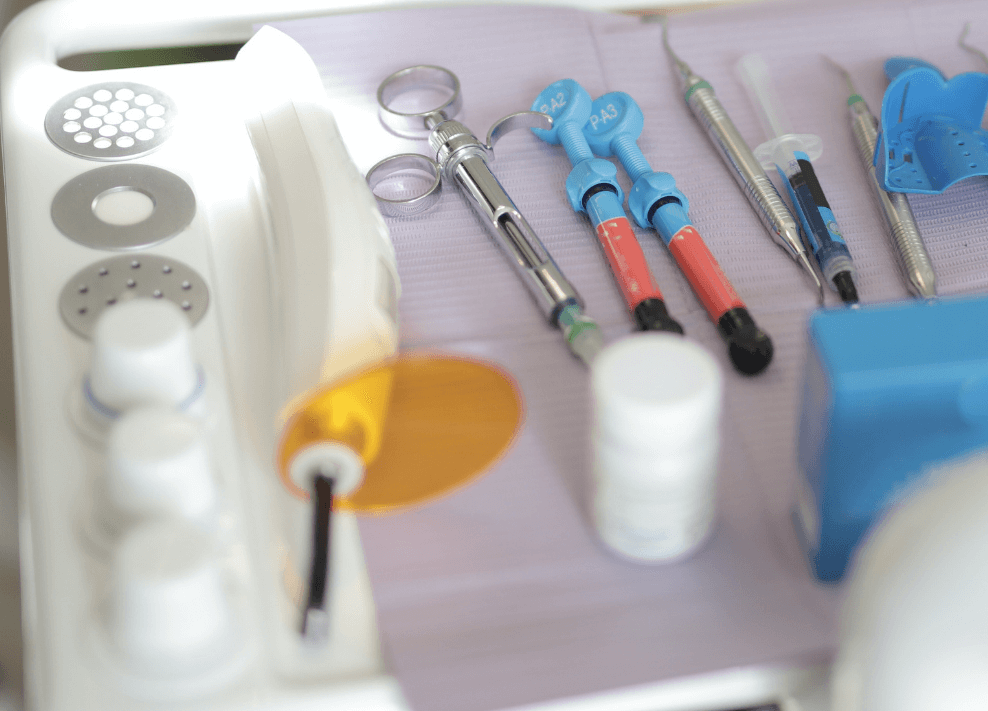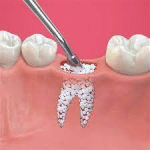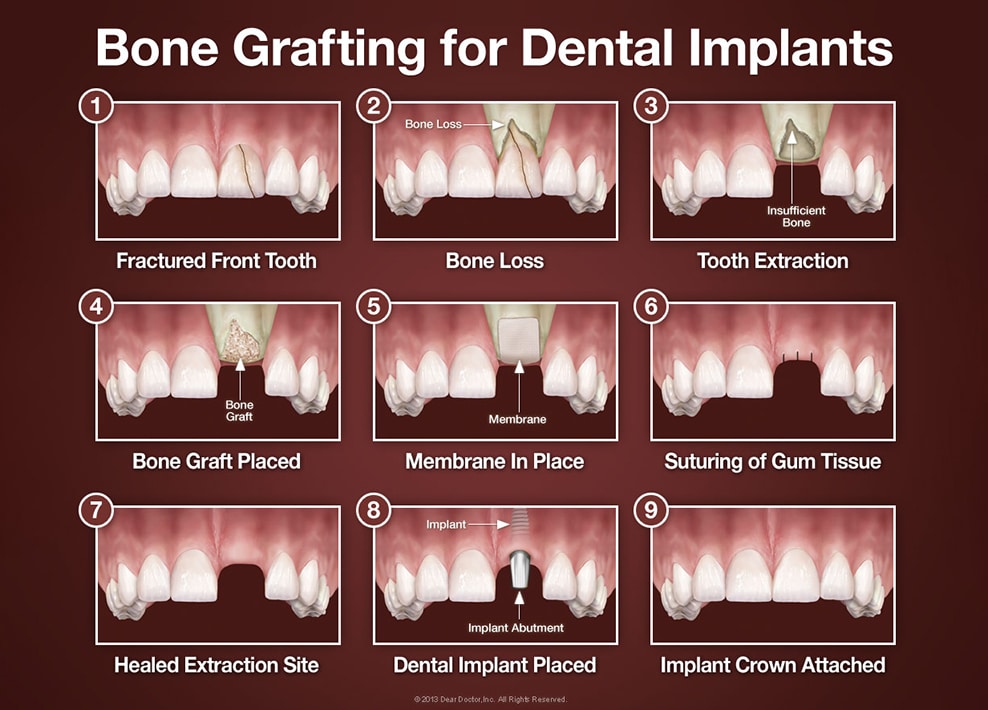What is a dental bone graft?
A dental bone graft is a procedure that replaces missing bone in your jaw with bone-grafting material to encourage regeneration. As the natural bone grows, it absorbs the graft material, resulting in a fully integrated region of new bone. Today, bone grafting is a routine treatment, performed as part of a tooth replacement plan.
When is a bone graft needed?
Events such as ageing, missing teeth, genetic or development defects, untreated periodontal disease, and trauma to the jaw can lead to bone loss. If you need a tooth extraction and are considering a dental implant, your dentist might recommend bone grafting. In fact, it is estimated that half of implant placement procedures require bone grafts.
When a tooth is lost, the surrounding bone often begins to disappear (resorb) as well. In that case, it may be necessary to rebuild some of the bone structure. Maintaining sufficient bone tissue around the teeth is a crucial part of keeping up your oral health. That’s why today, when a tooth is going to be extracted (removed), a bone graft often will be placed at the time of extraction, to preserve as much bone as possible. Bone grafting is often necessary before an implant can be placed effectively. One major reason that dental implants do work so well as replacements for natural teeth is that they actually become fused to the underlying bone. This system offers superior durability and a host of other advantages.

Types of bone grafts
- Autografts are used when a surgeon chooses to use the patient’s own bone for the graft. The bone matter typically is taken from the patient’s jaw or hip.
- Allografts come from a human donor, usually cadaver bone that has undergone treatments to make it neutral to immune reactions and free of host diseases.
- Xenografts use the inorganic portions of animal bones – typically, bovine material (i.e. taken from cows). This type of graft does not stimulate the body’s cells to form bone. Instead, it acts as a scaffolding into which your bone naturally grows.
- Alloplasts are created from hydroxyapatite, a naturally-occurring mineral in bone. This synthetic bone substitute poses no risk for disease transmission and is capable of healing small defects by itself. Similar to a Xenograft, an Alloplast does not stimulate your body’s cells to form new bone; instead, it acts as a supporting structure into which your bone grows.
Consultation
Your dentist will discuss your options with you prior to commencing treatment. If bone grafting is recommended, he or she will also discuss the type of bone grafting material to be used.
Some people may not be a candidate for bone grafting procedures. These individuals include those who have active infections, are immunocompromised, are undergoing radiation or chemotherapy, or who are pregnant and/or nursing.

Procedure
Anaesthesia
For most bone graft procedures, your dentist will use a local anaesthetic to numb the site. In the case of autograft implants, where the tissue is being sourced from the patient, your surgeon may use IV general sedation. Either way, your dentist will ensure that you are comfortable and do not feel anything while the graft is being placed.
Extraction and/or bone sourcing
If you are using an autograft, the surgeon will start by sourcing the bone from the chosen location. Similarly, if you need a tooth removed, he or she will perform the tooth extraction at this time. Combining tooth extraction with bone grafting encourages faster healing.
 Graft insertion
Graft insertion
Next, the area is thoroughly cleaned. If you do not have an extraction, the surgeon will make an incision in the gum tissue to expose the bone. Then, he or she will attach the bone graft material to the exposed bone.
Stitching
Once the graft material is in place, the area is sutured closed. The dentist may use pins, plates, wires, cables, or even a titanium screw to hold the tissue together. If you source the bone from your body, the surgeon will also stitch that area together.
Recovery
In most cases, you can plan to return home the same day as your procedure, but you might need a driver if you received sedation or general anesthesia.
Aftercare
A few hours following the procedure, when the effects of the anaesthesia have dissipated, the patient is likely to experience some discomfort. The dentist will provide instructions on pain management. Some pain is normal but should diminish after a few days. In some cases, some discomfort may continue for a few weeks, as the site heals. It’s important to follow your dentist’s post-op recommendations during this period. This includes limiting one’s diet to soft foods (such as mashed potatoes, oatmeal, smoothies, scrambled eggs) while your mouth heals.
Normal short-term side effects of a bone graft procedure include:
- Gum swelling
- Skin swelling or bruising
- Minor bleeding
- Difficulty eating, speaking, and chewing

Healing
Healing of the site should be complete in about 4-6 weeks. However, you will need four to six months — and sometimes longer — to completely heal and be ready for your dental implant. Your dentist will provide instructions to care for the area, and you should follow these closely to prevent failure or complications.
Possible complications
In some cases, bone grafts can also result in health complications, such as:
- A negative reaction to anesthesia during the procedure
- Pain, swelling, and/or inflammation around the donor and grafting site
- Bleeding or infection
- Injuries affecting your nerves
- Your body may reject the bone graft
- Your body may re-absorb the graft

Other types of dental procedures to support bone growth
Bone grafting is just one type of bone augmentation procedure, and others may be needed to build bone in your mouth and support dental implants. These other procedures include:
Sinus lift or subantral graft. This procedure raises the sinus floor to increase the bone’s height in your upper jaw above the premolar and molar teeth to support the placement of dental implants.
Ridge expansion
This surgical procedure divides the jawbone into an inner and outer section to insert bone graft material, create new bone, and widen the jaw to support dental implants.
Distraction osteogenesis. This procedure makes a shorter bone into a longer bone by cutting it into two pieces, slowly pulling the two pieces apart and encouraging new bone to form and fill the space.
Alveolar ridge preservation or socket preservation. This surgical procedure reduces bone loss after tooth extraction by placing a bone substitute in the socket and covering it with a barrier membrane directly after removal.
Like dental bone grafts, most other bone augmentation procedures only sound like a complex or invasive procedure. In reality, your dental professional can quickly perform most surgeries needed to support bone growth and development.
In four to six months, you can have the healthy bone structure required to support dental implants and be one step closer to restoring your smile.

